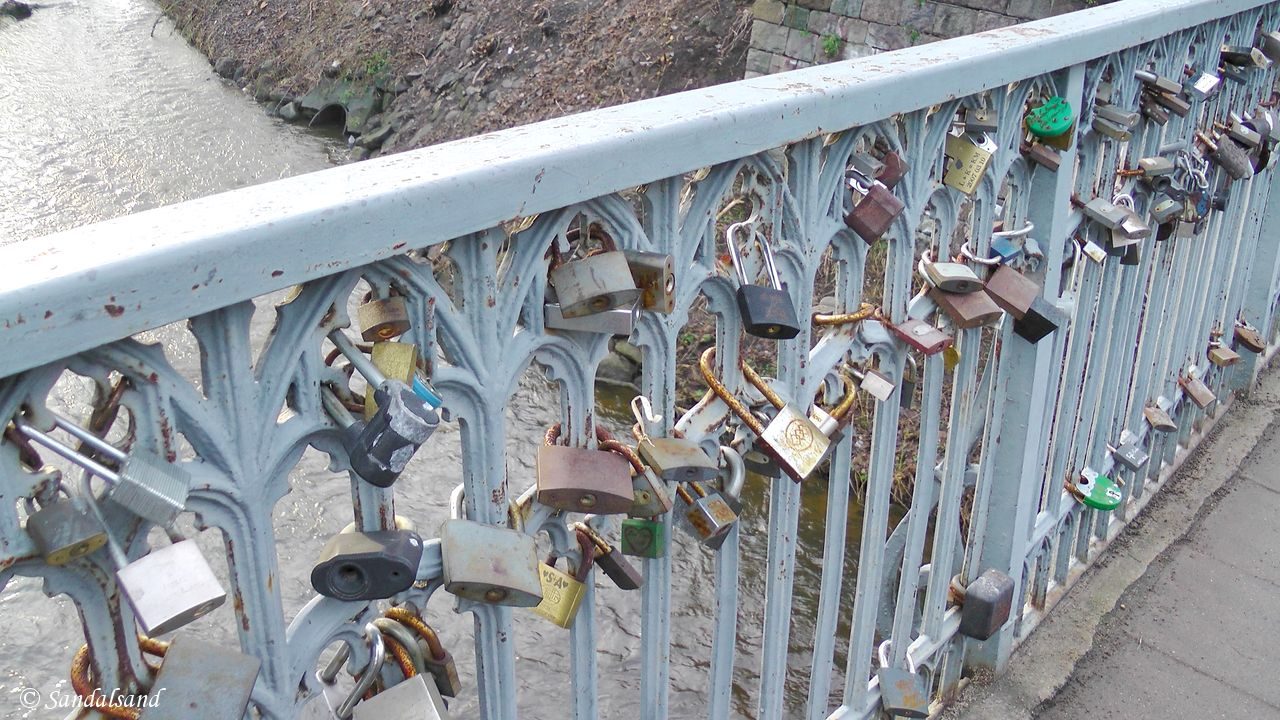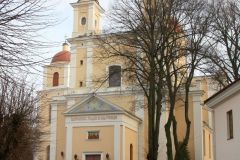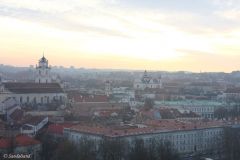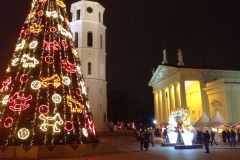Vilnius, the capital of Lithuania is an easy-going city. It has a pleasant old centre highly acclaimed by the World Heritage Committee. Also, it has a not so rebellious free republic within its borders.
Where and what is Vilnius?
Lithuania is one of those countries many have heard of, some have an idea of where it is, and very few have ever been there. Is it not worth a visit? I only spent a couple of days in the capital of Vilnius, on a rapid move between the (formerly) Eastern European countries situated on the Baltic Sea. Read the introductory article. In addition I saw nothing of the countryside.
Nonetheless I’m ready to offer this little piece of advice: Go and visit Vilnius. It’s worth it.
Lithuania is a country of almost three million inhabitants, half a million of which populate the country’s capital. Unlike some other countries in this part of the world, the Russians make up a very little percentage despite Lithuania being subjugated for decades as part of the Soviet Union.
Lithuania entered in the 1990s a path of rapid modernisation and westernisation. Along with the other Baltic States of Latvia and Estonia, they joined the European Union and NATO as fast as possible.
The city centre
Walking the streets of central Vilnius one does not get a sense of rapid modernisation, rather a sense of continuity. The architecture is very European, ranging in buildings from the Cathedral to the City Hall, the Presidential Palace and the old University. Styles range from gothic, renaissance, baroque to neoclassical. Churches are on the other hand a mix between Russian Orthodox and particularly Roman Catholic. There are few Jewish remains.
Vilnius has not really many remains of the very old days, when the country ruled several of its present-day neighbours. This was back in the 14th century. Since then, history has proven not as respectful and the capital was sacked several times.
.
The once important and large Gediminas Castle in the centre of town is a mere shadow of its former glory. The hill does provide a nice viewpoint though. Besides there is a cute little funicular going. The National museum is at the base of the hill and a very nice park on the other side. For one reason or another I was not allowed to take this picture of traditional Lithuanian women’s clothing.
The Gediminas Avenue is the city’s main street. It leads from the Cathedral on the central main square and outside the old town. Walking this street you wouldn’t know which European major city you were visiting.
The street’s name also serves as a reminder of the country’s turbulent past. Dating back to 1836 it was named St. George Avenue. Under the Polish rule a hundred years later it was named Mickiewicz Street and then Adolf Hitler Street during the Nazi Germany occupation. At the beginning of the Soviet occupation in 1940 it was called Stalin Avenue, later renamed Lenin Avenue. The present name is no older than 1989.
I would recommend everyone to spend a couple of hours walking the streets in the city centre, between all these places and buildings mentioned above. It is after all a World Heritage Site, designated so by the UNESCO primarily for the city’s varied architecture. Make sure you walk the pleasant (and touristy) Pilies street and the alternative Literatu Street with images of poets and the like fixed to the walls. From there on you may continue down to a rather special place.
The republic of Uzupis
I walked across a bridge over the little river of Vilnia, once giving name to the city, and entered another “republic”, called Uzupis/Uzupio. The guidebook goes: “A largely unrestored area primarily occupied by artists, dreamers, squatters, and drunks. In 1998, the residents unofficially declared the area to be an independent republic, with its own president, anthem, flag, and constitution.”
You will need to spend some time here and make sure to seek out the constitution posted on a wall near the centre. Article number 13 goes: “A cat is not obliged to love its owner, but must help in time of need.” (Here’s a blog post with all articles.)
A couple of very special churches
Very close to the bridge into the Uzupis you will find the red-brick church of St. Anne. It is a lovely church, and I can easily understand why Napoleon on his campaign in these parts of the world wanted to take it in his palm and bring it home to France.
The Peter and Paul Church is a long walk, or short trolley-bus ride, up the hill. It is one of the most magnificent churches I have ever seen, and I’ve seen quite a few of them. This baroque masterpiece was made by Italians artists.
You may also do what I didn’t: Visit the church of St. Casimir near the city hall which Stalin turned into a museum of Atheism. It now longer is. Others also recommend the KGB Museum, which means there is more to see in Vilnius than I got to see in less than two days.
Eat and sleep
“Good location, boring rooms” is what titled my review of the Best Eastern City Gate on Tripadvisor. I gave it 3 of 5 stars with this explanation: “Situated next to the Dawn Gate, one of the tourist attractions and a gate into the Old Town, makes this a good choice. If you are driving this is perfect. The breakfast is decent and the staff is very helpful and good. The room was clean, big and boringly furnished.”
I tried to find restaurant serving regional cuisine and found a pleasant one right on the central monument square in Uzupis for lunch. It was popular among locals. The same evening I found a touristy one called Forto Dvaras on the main Pilies street and was content with the bread soup as a starter, but was disappointed by the boring pork chops for the main course. The next day, for lunch, I found a decent Indian restaurant (Sue’s Indian Raja) on Cathedral Square.
Read more
The week before Christmas 2013 I went on a fast moving road trip between four Eastern European capitals all with old towns inscribed on UNESCO’s World Heritage List. Read the introduction and the individual entries about Warsaw, Vilnius, Riga and Tallinn. You may also want to have a look at my entry about Vilnius as a World Heritage Site.
Images from Vilnius







